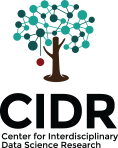Integrating large-scale datasets into a metamodel of multiscale communication networks underlying Alzhimer’s disease progression
Alzheimer’s disease (AD) is a progressive neurodegenerative disease of old age and the most common cause of dementia. Despite great advances made in understanding the pathogenic features leading to AD, we still only partially understand its cause, and currently have no effective treatments and prevention strategies. While AD research has been largely focused on the damage to neuronal cells, accumulating evidence suggests that multiple non-neuronal cell types in the brain are directly involved in the degeneration process. Cellular communication between different types of brain cells are predicted to have a major contribution to AD progression, yet much remains unknown regarding cellular communication networks spanning multiple cell types.
We are interested in expanding the research focus from single cell types to profiling entire cellular environments, aiming to build a model of the cellular cascade leading to AD, i.e. the crosstalk between cell types and the consequent changes in their internal cell states that drives the disease. We are relying on our combined expertise in: applying cutting edge genomics and imaging technologies in the brain to generate large scale datasets with single cell resolution; in machine learning, image analysis, and graph theory approaches to tackle the data analysis challenges; and in integrative modeling of dynamic biological systems across scales using Bayesian modeling approaches.
Goal
To create a comprehensive multi-resolution model that describes the cascade of cellular communications during Alzheimer’s disease (AD) progression
Researchers
What we did
In progress
Results
Forthcoming
Brain wide-cognitive networks of individual mice
There are no two similar brains on earth. But the brain-wide mechanisms of individuality are largely unknown, especially in animal models. In a collaboration between Ariel Gilad’s and Oren Forkosh’s labs, we aim to study brain-wide networks of the mouse, during cognitive and social functions, on the basis of individuality. To do this, we combine state-of-the-art experimental methods along with BIG data computational analysis to compute cognitive and social networks in behaving mice. First, mice will be
monitored in a ‘social box’ and we will implement a computational framework to map the personality of each mouse. Next, using multi-fiber photometry we will simultaneously record from dozens of cortical and subcortical areas as mice interact within the social box and perform complex cognitive tasks. Using BIG data network analysis on dynamic spatiotemporal patterns we will extract network motifs related to the social and cognitive function of each individual mouse.
Goal
To make a substantial scientific impact by collaborating between experimental and computational disciplines
Researchers
What we did
In progress
Results
Forthcoming



